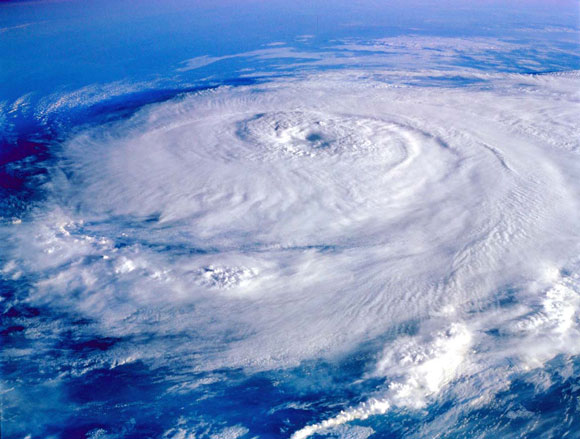On May 22, 2014, the U.S. National Oceanic and Atmospheric Administration’s (NOAA) Climate Prediction Center issued hurricane season outlooks for the Atlantic Ocean and the eastern North Pacific. The hurricane season is expected to be near normal or below normal for the Atlantic Ocean and near normal or above normal for the eastern North Pacific. That’s in part due to a possible strong El Nino, forming now in the Pacific.
Meanwhile, Atlantic hurricane names for the 2014 season include: Arthur, Bertha, Cristobal, Dolly, Edouard, Fay, Gonzalo, Hanna, Isaias, Josephine, Kyle, Laura, Marco, Nana, Omar, Paulette, Rene, Sally, Teddy, Vicky, and Wilfred.
Pacific in 2014 looks like record-breaking El Niño year of 1997

The official hurricane season for the Atlantic Ocean starts on June 1 and ends on November 30 of each year. This year, scientists say there is a 50% chance that the season will be below normal and a 40% chance that the season will be near normal.
These NOAA scientists predict that there will be between 8 to 13 named storms with winds above 39 miles per hour and that 3 to 6 of these storms will develop into hurricanes with winds above 74 miles per hour.
Only 1 to 2 major hurricanes are expected (e.g., category 3, 4 or 5 hurricanes).
Hurricane activity is expected to be somewhat low in the Atlantic Ocean this year because of the anticipated development of El Niño. An El Niño, which is associated with a large, warm pool of surface water in the central and eastern portions of the tropical Pacific Ocean, can have far ranging effects across the globe. Specifically, El Niño can strengthen wind shear and increase atmospheric stability over the Atlantic, which often leads to a reduction in the number and intensity of storms.
The hurricane season for the eastern North Pacific starts earlier on May 15th and runs through November 30th. This year scientists say there is a 50% chance that the season will be above normal and a 40% chance that the season will be near normal.
They are predicting that there will be between 14 to 20 named storms and that 6 to 11 of these storms will develop into hurricanes. A total of 3 to 6 major hurricanes are expected in eastern North Pacific this year.
Officials at NOAA are urging people who may be in the path of any hurricanes to be prepared. You can check out NOAA’s preparedness website here for some good tips. This year is also the first year that NOAA will be rolling out a storm surge mapping tool that will show communities within 48 hours prior to a tropical storm or hurricane where to expect damaging storm surges.

Kathryn Sullivan, who is the administrator of NOAA, commented on the upcoming hurricane season in a press release. She said:
Thanks to the environmental intelligence from NOAA’s network of Earth observations, our scientists and meteorologists can provide life-saving products like our new storm surge threat map and our hurricane forecasts. And even though we expect El Niño to suppress the number of storms this season, it’s important to remember it takes only one land falling storm to cause a disaster.
Bottom line: NOAA’s Climate Prediction Center hurricane season outlooks for 2014 predict that the hurricane season will be near normal or below normal for the Atlantic Ocean and near normal or above normal for the eastern North Pacific.
Pacific in 2014 looks like record-breaking El Niño year of 1997











